Safe-Seal Endo Tube
Introducing the next generation of airway management
endotracheal tubes
Traditional Tracheal Tubes
can hurt…
Tubes with inflation cuffs work by putting pressure on the tracheal tissue when inflated with air.
A kinder, softer tube that works with soft rings, or fins, mitigates risks of
over insufflation while enabling the patient to be moved without damaging vocal cords.
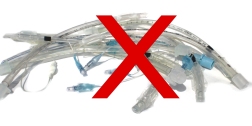
traditional tubes
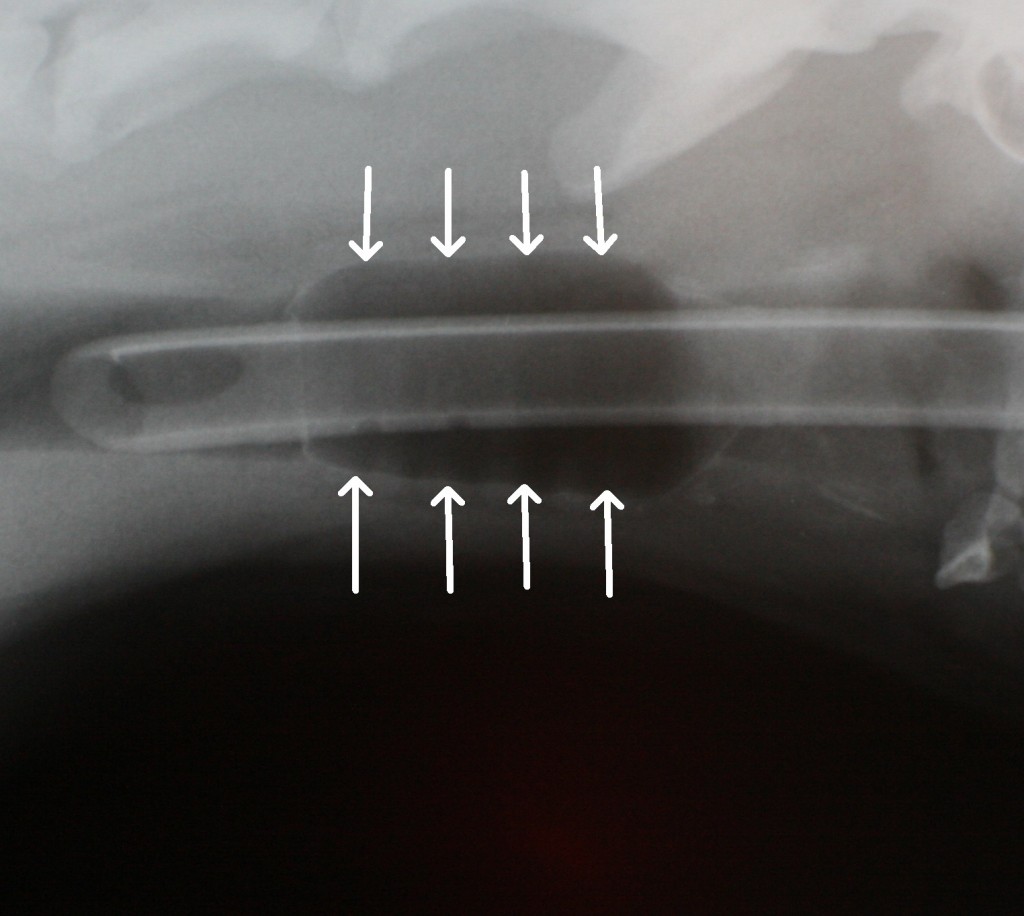
traditional inflation cuff
Traditional tube with inflation cuff uses air to seal the trachea. The New Safe Seal Tube does not use an inflation cuff.
Safe Seal Endo Tube inserted in to trachea
Watch the Safe Seal Tube inserted in to the porcine trachea
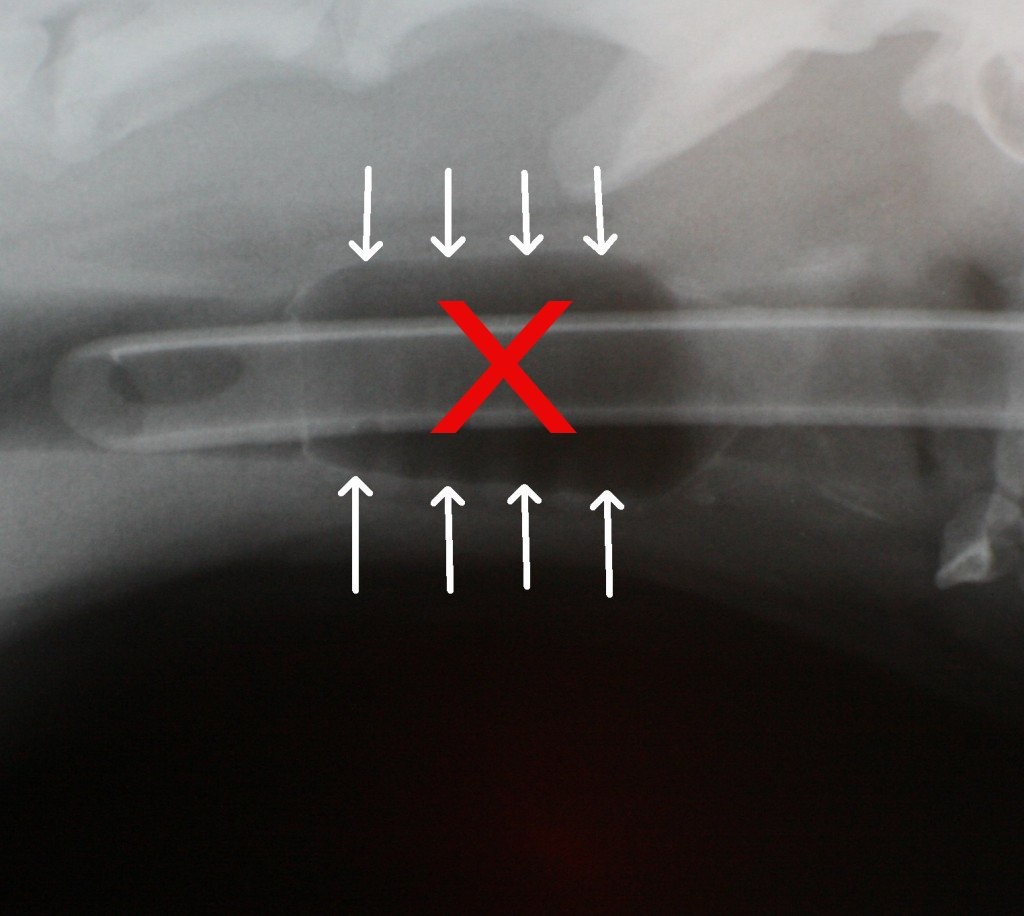
traditional inflation cuff
Traditional tube with inflation cuff expanding the surrounding trachea tissue
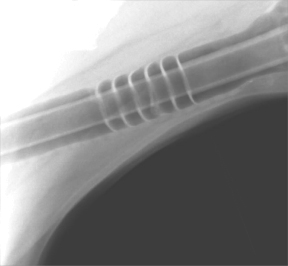
New Safe Seal Endo Tube
Safe Seal Endo Tube
Testimonial
![New Safe Seal Endo Tube My name is Amy Carr and I am a Diplomate of the American College of Veterinary and Critical Care, with over twenty years of experience in the field. Dr. Jerry Ratterree recently asked me if I would try his Safe~Seal Endotracheal tube and give him my comments on the experience. I am happy to report the I used the unique endotracheal tube on several patients ranging in weight from 25 to 60 pounds and am now a fan of this tube. It is easy to place and I like the fact that it does not require a cuff, which can be improperly inflated to adverse effect. The design with baffles [Blains] appears to be atraumatic and we did not notice any complications such as coughing or gagging. One patient did vomit and aspirate during the course of a surgical procedure. When we removed the tube the ingesta was scraped up by the baffles [Blaines] and we did not see any evidence of subsequent aspiration pneumonia. I would be happy to replace my current endotracheal tubes with this tube. I am not related to Dr. Ratteree and was not compensated for my participation in this study. Please contact me if I can be of further assistance. Sincerely, Amy Carr, D.V.M. DACVECC](http://safe-seal.net/wp-content/uploads/2015/06/woman.jpg)
New Safe Seal Endo Tube
My name is Amy Carr and I am a Diplomate of the American College of Veterinary and Critical Care, with over twenty years of experience in the field. Dr. Jerry Ratterree recently asked me if I would try his Safe~Seal Endotracheal tube and give him my comments on the experience.
I am happy to report the I used the unique endotracheal tube on several patients ranging in weight from 25 to 60 pounds and am now a fan of this tube. It is easy to place and I like the fact that it does not require a cuff, which can be improperly inflated to adverse effect. The design with baffles [Blains] appears to be atraumatic and we did not notice any complications such as coughing or gagging. One patient did vomit and aspirate during the course of a surgical procedure. When we removed the tube the ingesta was scraped up by the baffles [Blaines] and we did not see any evidence of subsequent aspiration pneumonia. I would be happy to replace my current endotracheal tubes with this tube.
I am not related to Dr. Ratteree and was not compensated for my participation in this study. Please contact me if I can be of further assistance.
Sincerely,
Amy Carr, D.V.M. DACVECC
Testimonial

Safe Seal Tube Adapability
“I have been using my original Safe-Seal endotracheal tube (Beta-version) for approximately one year and have encountered no problems whatsoever. I routinely reach for the Safe-Seal in lieu of my “old”, traditional-style endotracheal tubes. I prefer its adaptability to a wide spectrum of laryngeal diameters, flexibility, ease of introduction and, of course, it’s lack of an inflatable cuff (which can either be over- or under-inflated or will not inflate at all -due to a leak- when it is needed most during an emergency). I wholeheartedly recommend this innovative device. You have permission to use this testimony”.
Michael L. Sergent DVM
Escondido, CA
Safe Seal Tube Easier
All the doctors I work with have had a very positive experience with the new Safe Seal Endo tubes. They are easy to place and appear to be less traumatic. I especially like no cuff issues.
I do give you permission to publish this testimonial via print/web.
Dr. Lesley Phillips
Animal Emergency and Referral Center
Ft. Pierce, FL
Safer: no over insufflation
Recently we had anesthetized an older dog for a nasoscopy and cranial radiographs. After induction we intubated him with one of the new Safe Seal endotracheal tubes and put him on Isoflurane. During the procedure, we noticed a smell of anesthetic gas coming from his mouth and nose, but we assumed the tube was a little too small and, as he was stable and maintaining a good plane of anesthesia, finished the procedure as planned and the dog recovered uneventfully. While readying the machine for the next patient, the technician noticed that the pop-off valve on the anesthetic machine had been closed the ENTIRE time that this patient was under anesthesia. I believe that the design of the new Safe Seal tube allowed the increased pressure to safely vent past the baffles, prevented some serious complications, and possibly saved his life- with any other endotracheal tube he might have died.
Please feel free to contact me if you have any questions- I think these tubes are great!
Deborah Fox, DVM
Riverside, CA
Longer Adaper Tube at the End
With reference to the [Safe~Seal] endotracheal tube developed by Dr. Ratterree, I found it very useful and experienced no problems.
I liked the wide weight range adaptability, function very well within the designed range for canines, 40-60 pounds.
I feel more confident in its seal since there is no air cuff that can leak. It worked as well, if not better, then the low pressure/inflation cuff tubes I am currently using. I liked the longer tube adapter on the end. It give more protection for the softer portion of the tube.
Overall, I’m impressed with the revolutionary design.
Dr. Dennis Riggs, D.V.M.

Have a story? We’d like to hear about your experience with the Safe Seal Tube…please email us below or call.
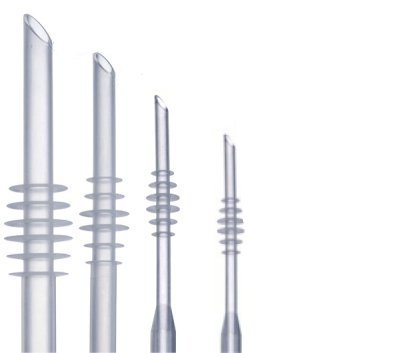
Veterinarian ET
Only 4 sizes of tubes are necessary for a small animal practitioner for dogs weighing 10 to 200 pounds

Proposed Human Endo Tube
In development is a Safe-Seal Endo Tube for human use. Not yet FDA approved. Contact us for more details.